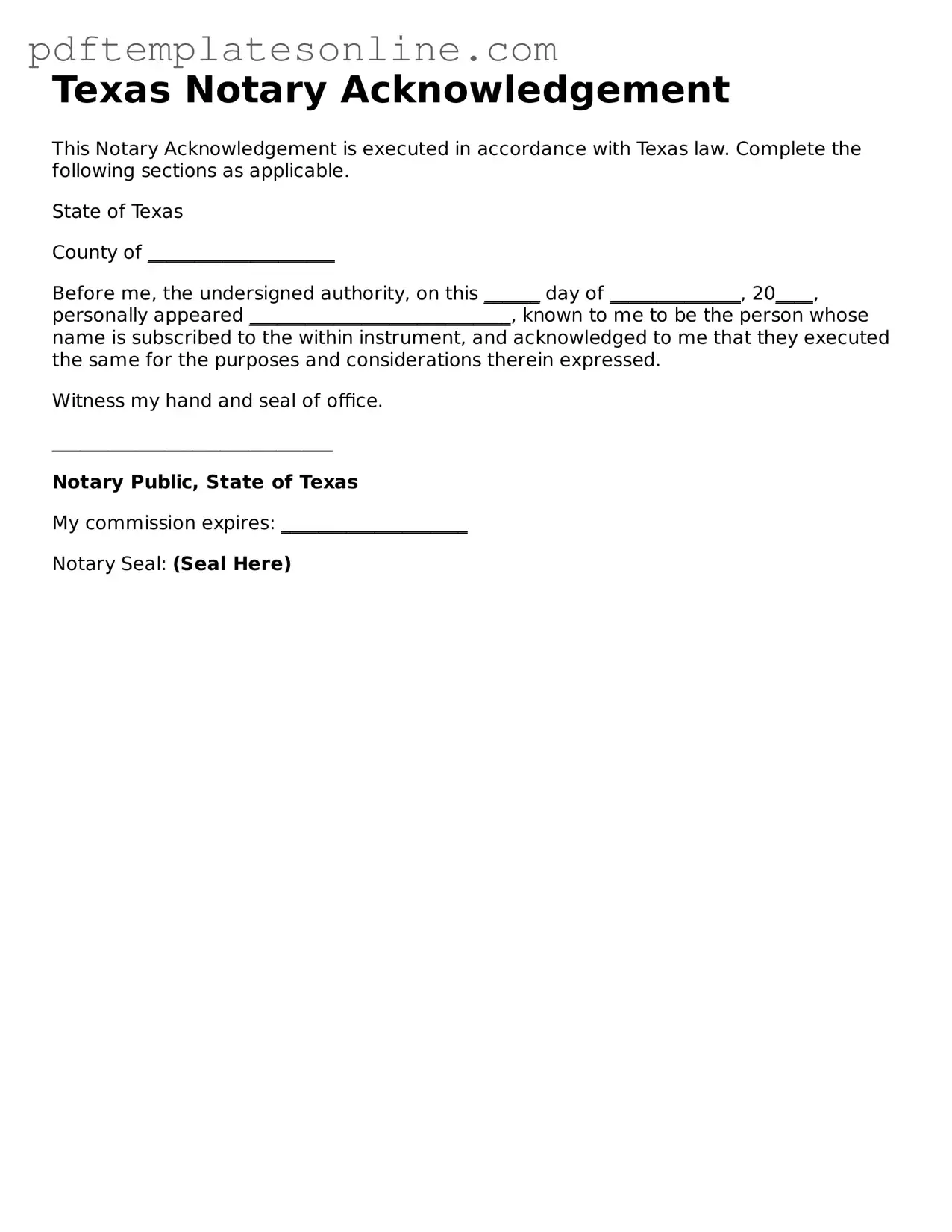Official Texas Notary Acknowledgement Document
The Texas Notary Acknowledgement form is a legal document used to confirm that a signer has willingly and knowingly signed a document in the presence of a notary public. This form serves to protect against fraud and ensures the authenticity of signatures. Understanding its purpose and proper use is essential for anyone involved in legal transactions in Texas.
Access Notary Acknowledgement Editor Now
